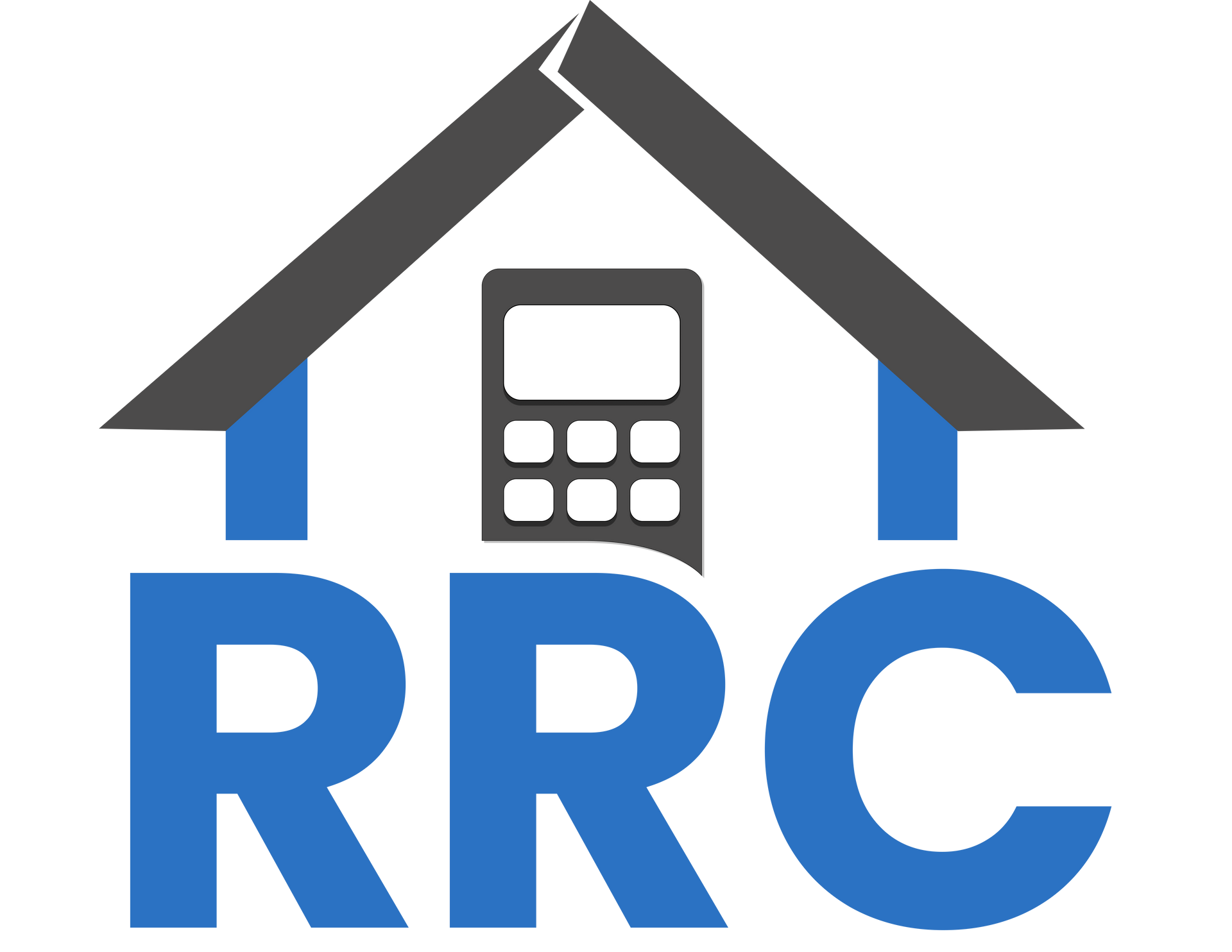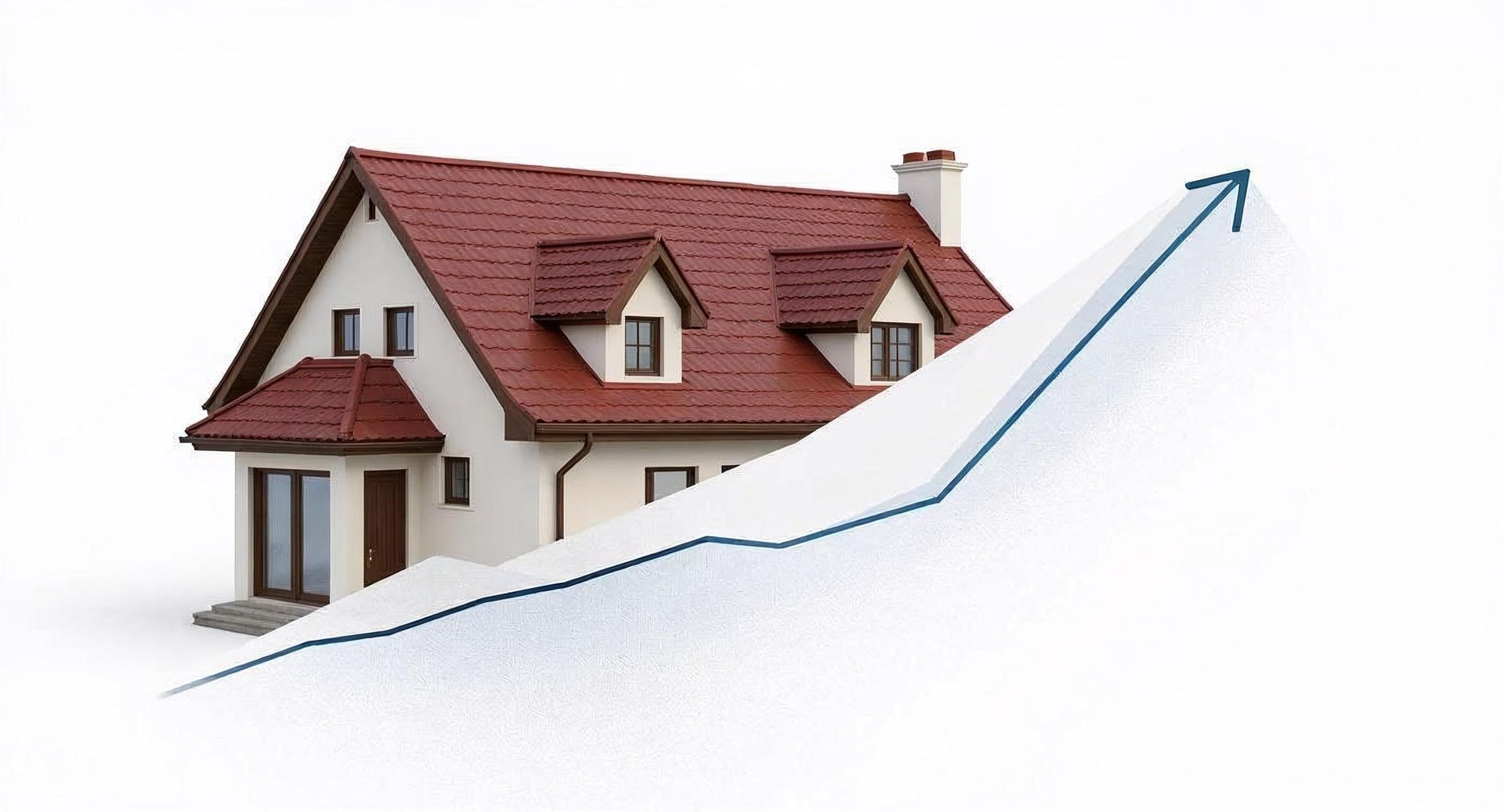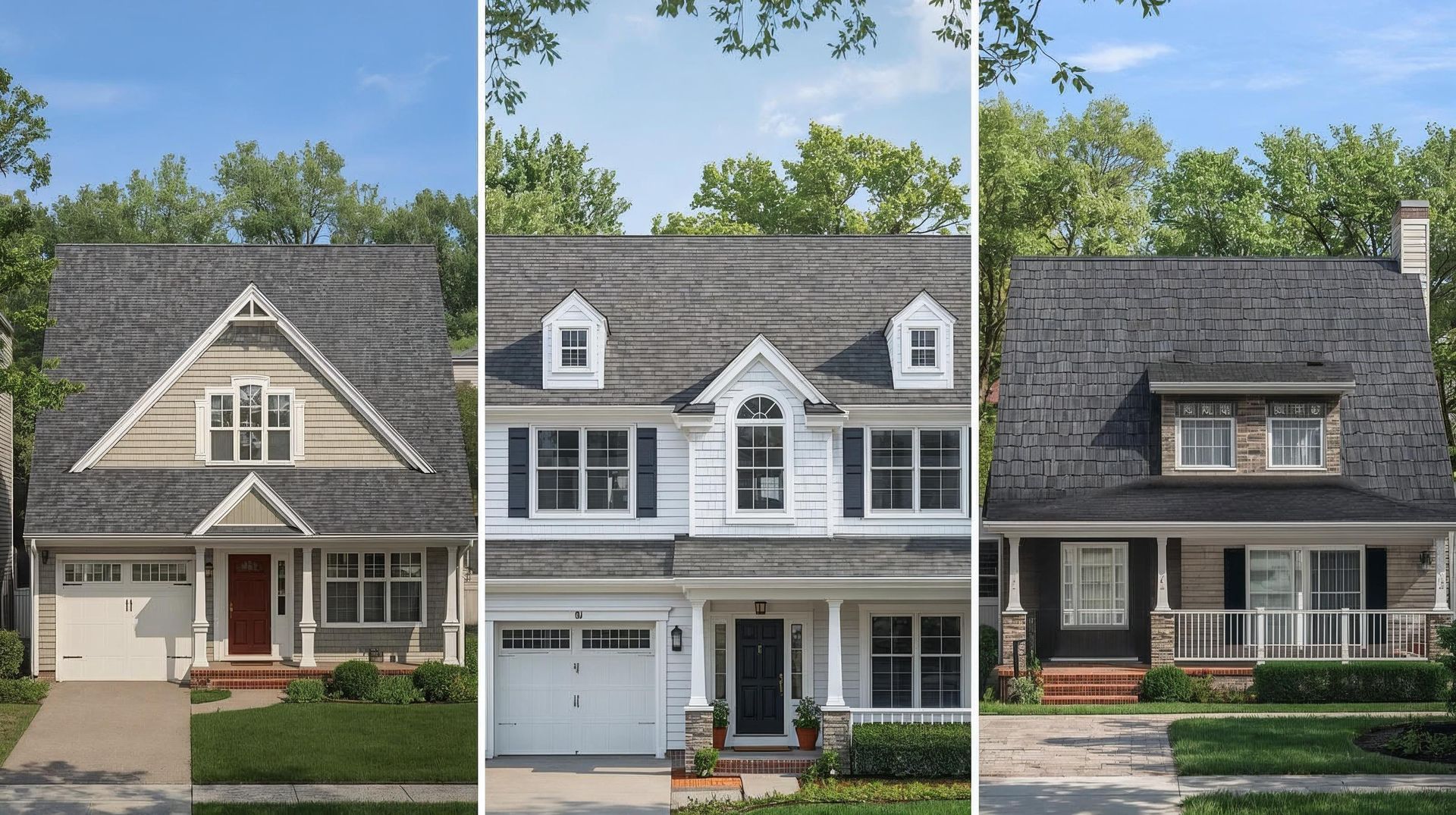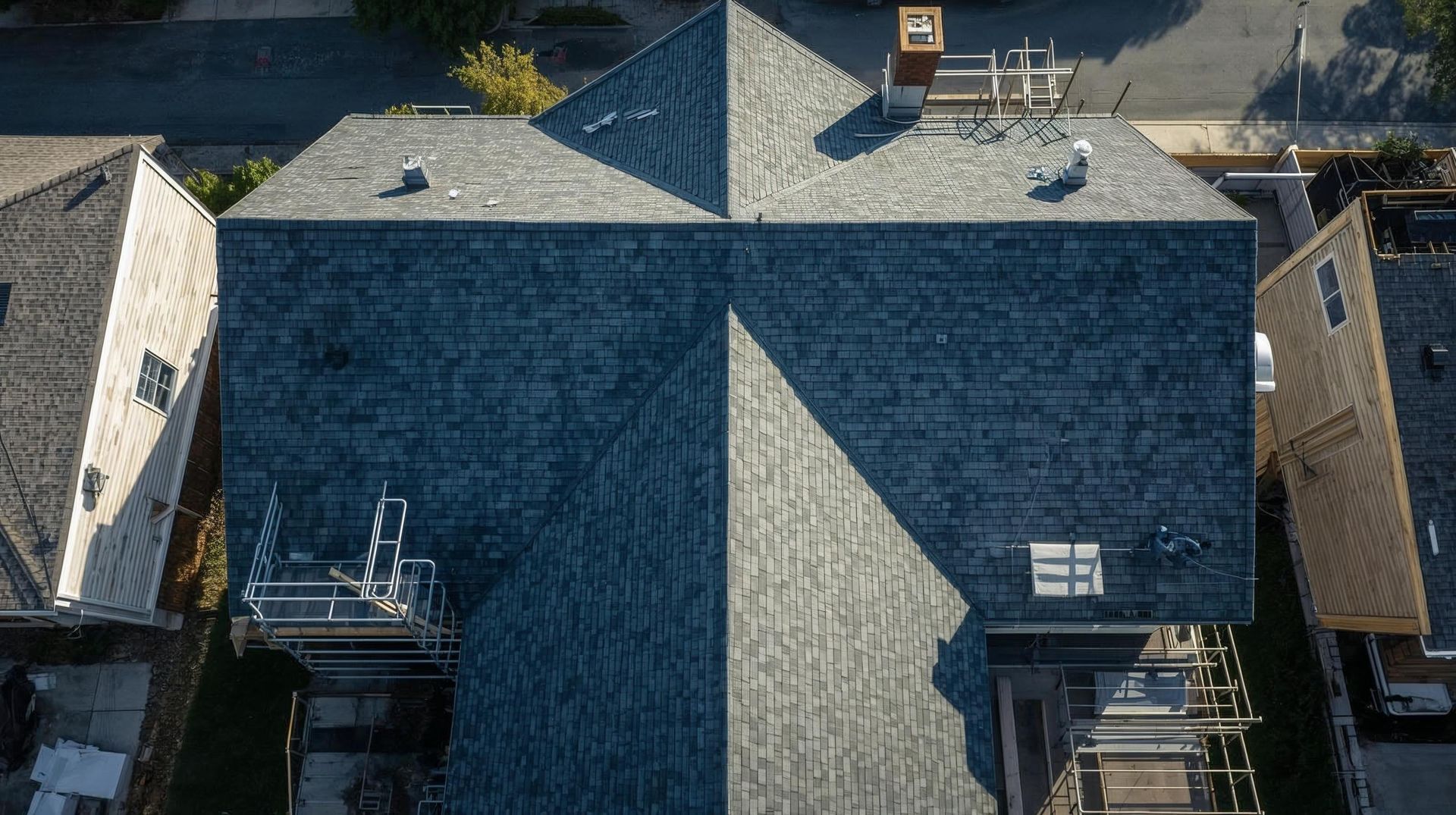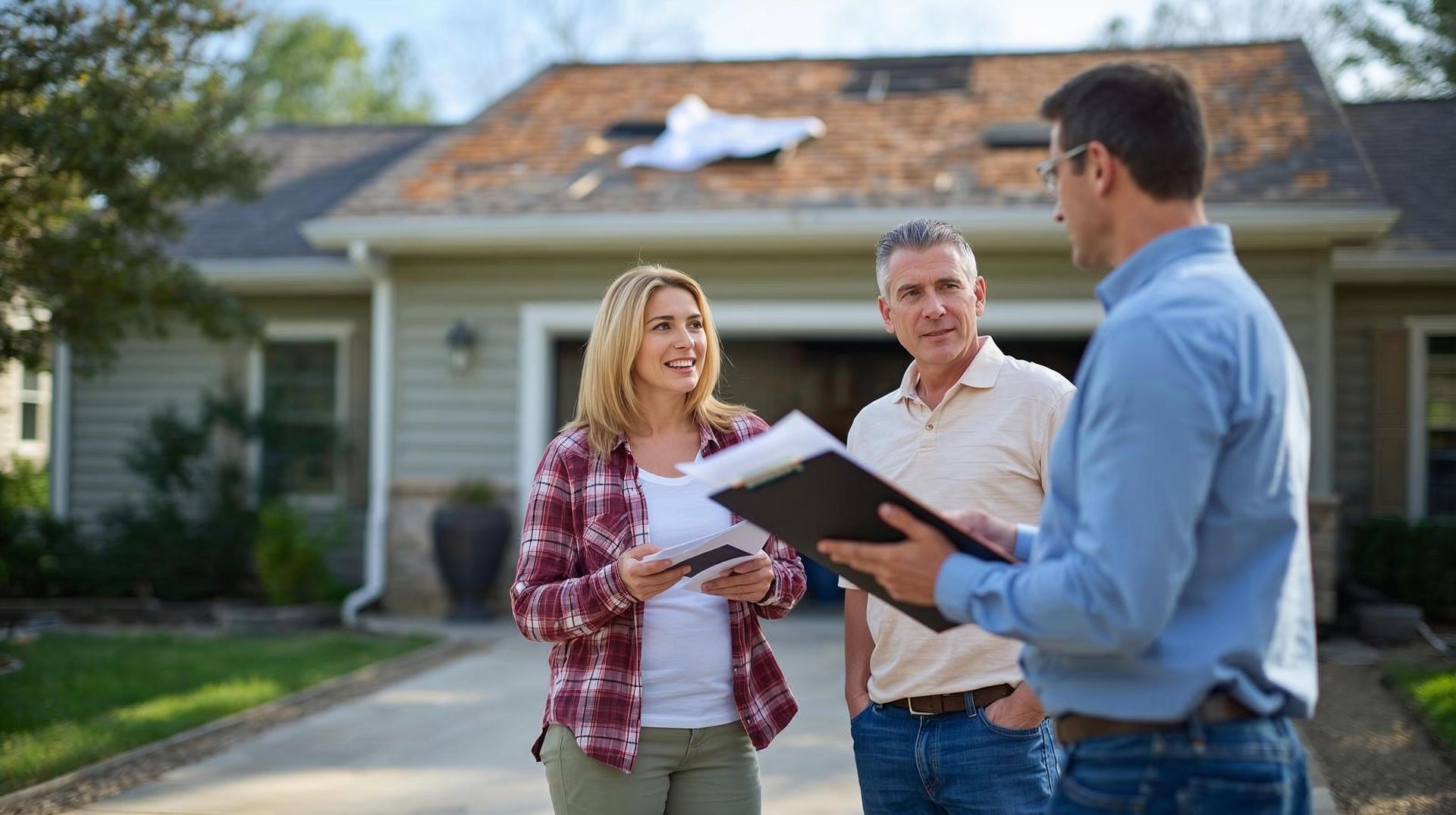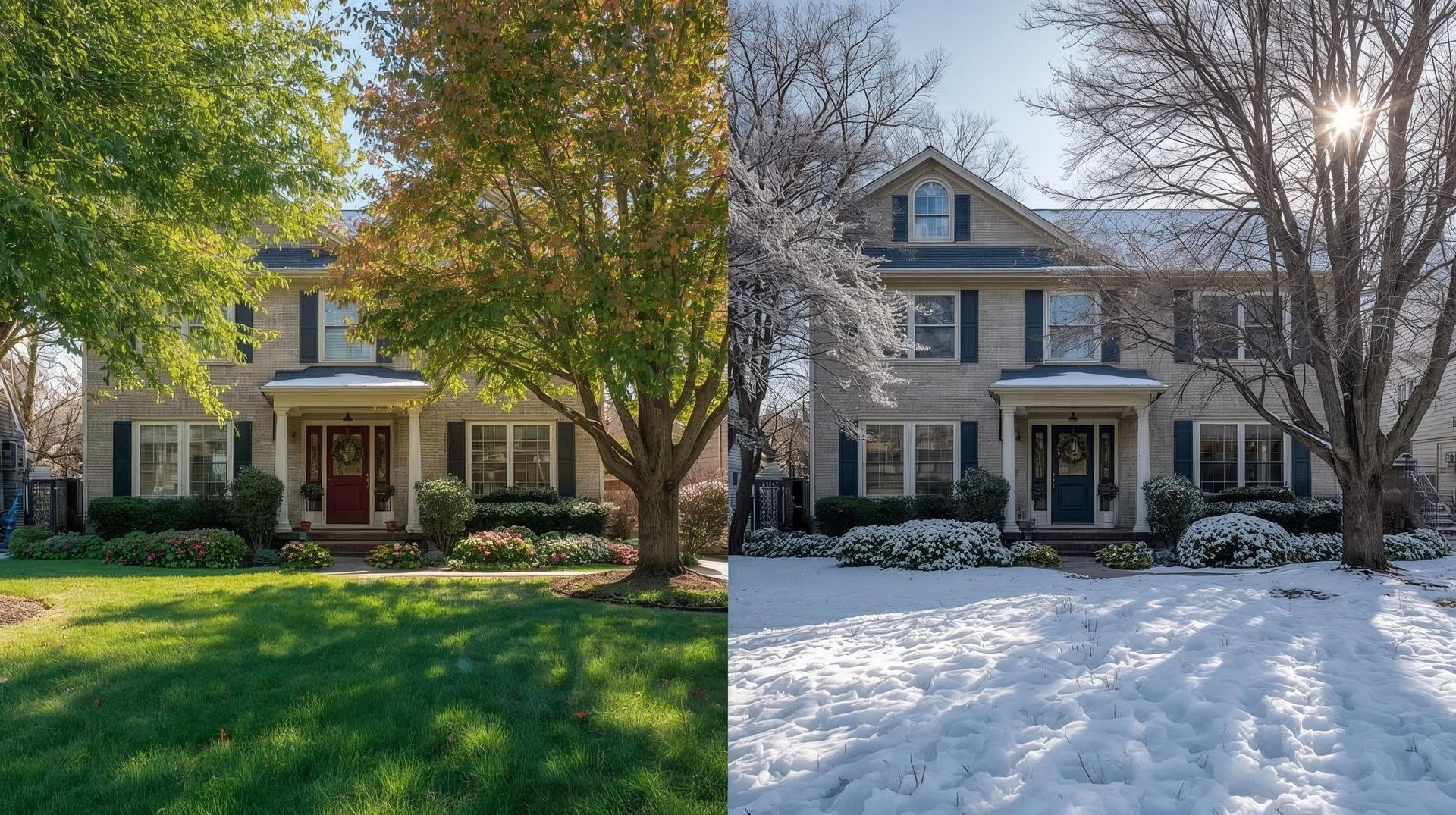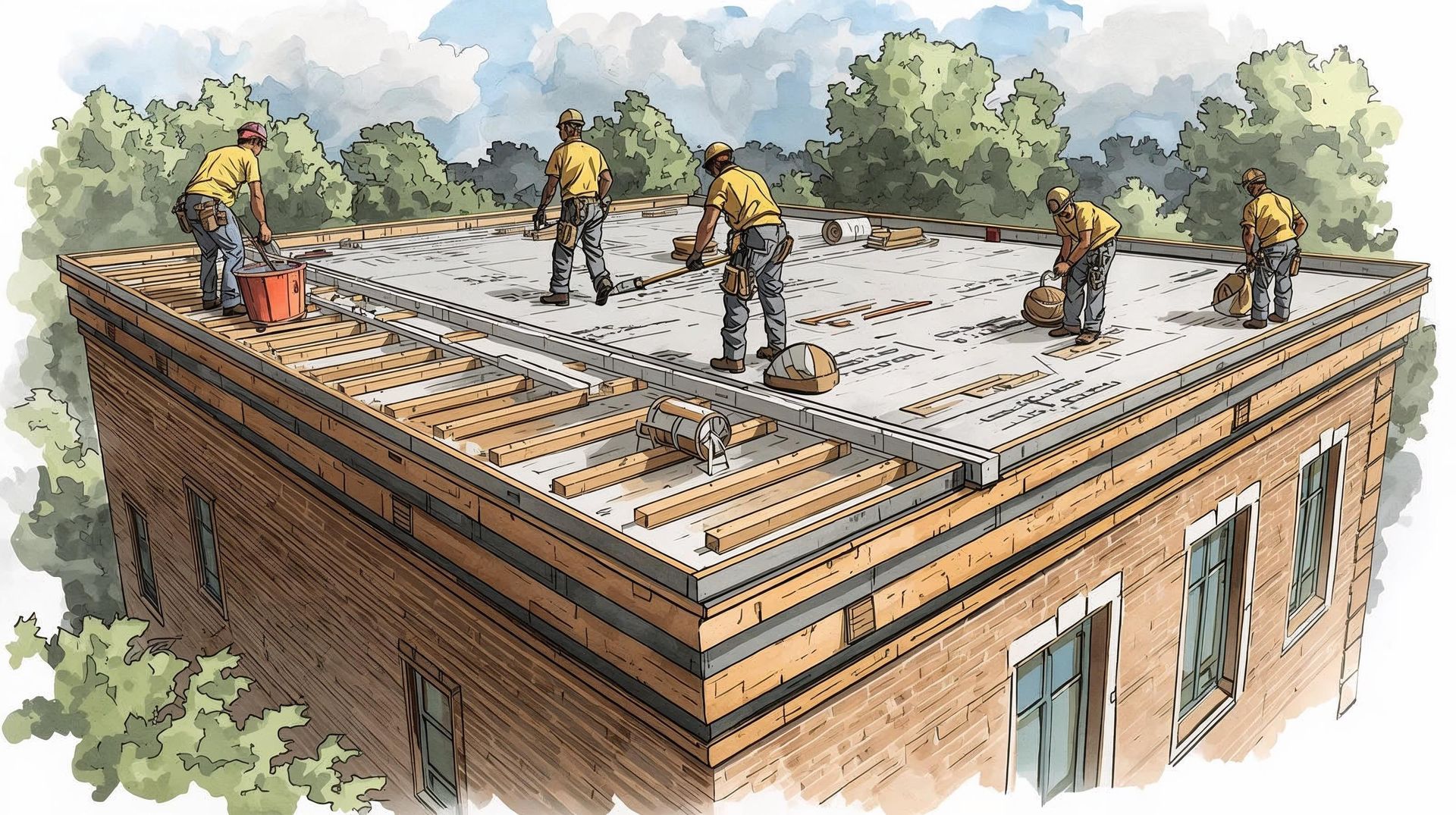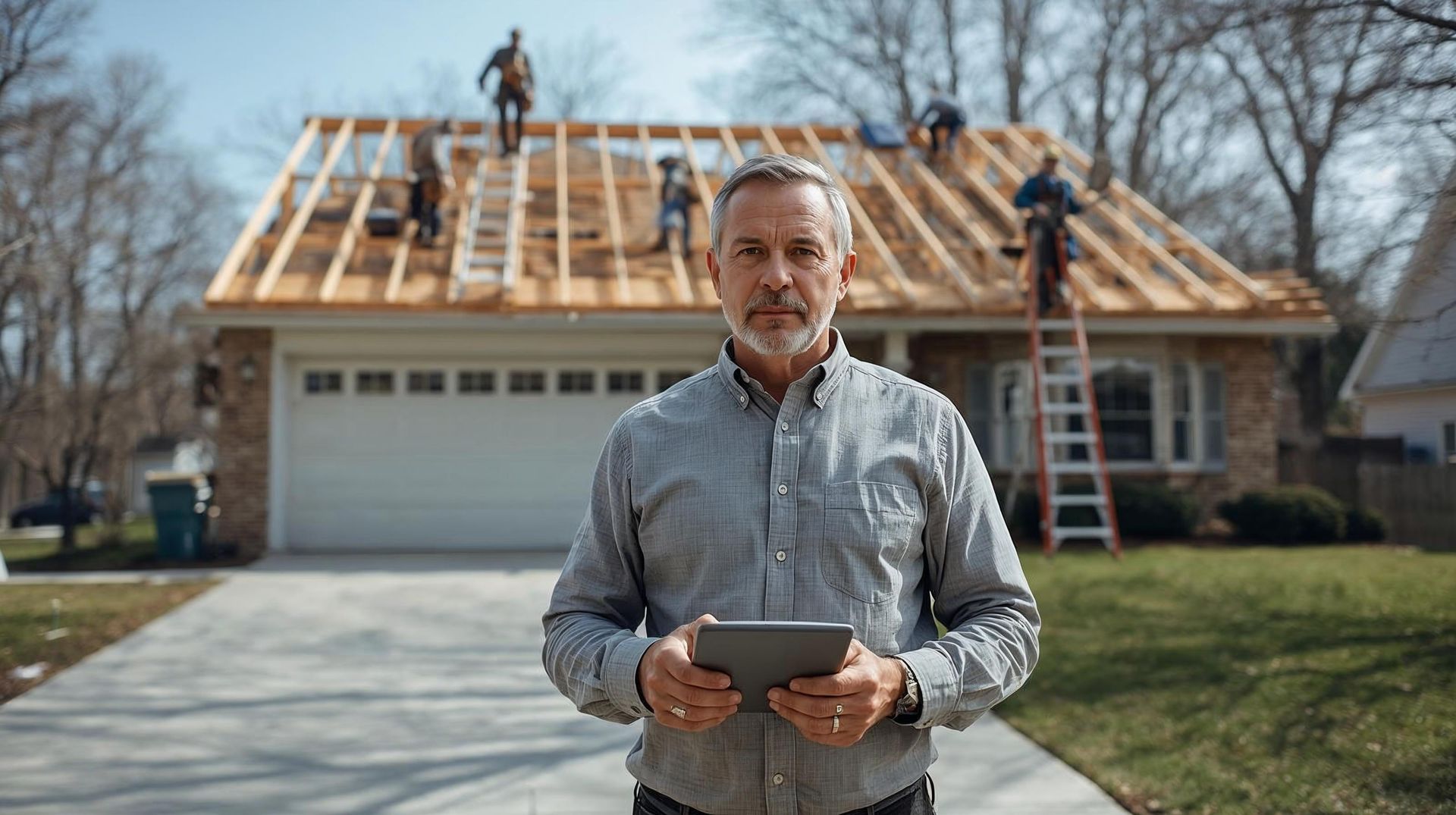The Role of Roof Ventilation: Why It’s Crucial for a Healthy Roof and Home
Roof Ventilation Explained: The Key to a Stronger, Healthier Home
The hidden costs of poor roof ventilation extend far beyond immediate comfort concerns.
Inadequate airflow can reduce your roofing system's lifespan by decades, void manufacturer warranties, and create conditions that promote wood rot, mold growth, and structural deterioration.
Professional roofers estimate that proper attic ventilation can prevent 60-80% of moisture-related roof damage while reducing energy costs by 10-40% annually.
Key Takeaways
- Proper roof ventilation reduces energy costs by up to 30% during peak seasons
- Balanced intake and exhaust vents prevent moisture damage and wood rot
- Poor ventilation leads to ice dams, shortened roof life, and indoor air quality issues
- Regular maintenance ensures your ventilation system operates efficiently year-round
Use our comprehensive roof replacement cost calculator to get detailed estimates tailored to your home's specific needs.
Understanding How Roof Ventilation Systems Work
Roof ventilation operates on natural convection principles where cool air enters through intake vents while hot air exits through exhaust vents, creating a continuous flow that regulates attic space conditions.
This process maintains optimal temperature and moisture levels throughout your attic floor space, preventing the accumulation of humid air that threatens roofing materials and structural integrity.
The Science Behind Effective Air Movement
Warm air rises naturally, creating pressure differentials that drive efficient ventilation when soffit vents and ridge vents work harmoniously together. Fresh air enters at the roof's edge through soffit vents, travels across the attic floor, and exits as heated air through elevated exhaust vents.
Proper attic ventilation requires balanced airflow with approximately one square foot of ventilation per 150 square feet of attic floor area, split equally between intake and exhaust capacity.
Also Read: What’s the Cheapest Way to Replace a Roof?
Critical Benefits of Proper Roof Ventilation
The financial and structural advantages of proper roof ventilation extend far beyond simple air movement, delivering measurable returns on investment through reduced energy costs and prevented damage.
Energy Efficiency and Reduced Cooling Bills
A well-ventilated attic maintains temperatures closer to outdoor levels, reducing thermal load on your air conditioning system and significantly lowering cooling bills during summer months.
Poor roof ventilation can cause attic temperatures to exceed 150°F, forcing air conditioners to work 40% harder and increasing energy bills substantially. Efficient ventilation keeps your attic cooler, reducing heat transfer to living space areas below.
Moisture Control and Structural Protection
Moisture buildup represents one of the most destructive forces affecting home structures. Moist air trapped in poorly ventilated attic spaces condenses on roof sheathing and roof decking, leading to wood rot, damp insulation, and compromised structural integrity.
Proper ventilation systems passively circulate air to remove excess moisture before condensation occurs, protecting roofing materials and maintaining attic insulation effectiveness throughout seasonal changes.
Ice Dam Prevention in Cold Climates
Ice dams form when warm air from living space areas heats the roof surface unevenly, causing snow to melt and refreeze at the roof's edge. Proper attic ventilation maintains consistent roof deck temperatures that prevent the freeze-thaw cycles responsible for ice damming.
When the attic melts snow uniformly, water flows freely off the roof without creating destructive ice formations that damage roof shingles, gutters, and interior walls.
Essential Components of Roof Ventilation Systems
Understanding how intake and exhaust vents work together creates the foundation for designing ventilation systems that protect your home for decades.
Intake Ventilation Elements
Soffit vents provide primary intake ventilation by allowing cold air to enter the attic space along the lowest points of the roof structure. These vents must remain unobstructed by attic insulation or debris to maintain proper airflow patterns.
Intake vents should provide approximately 50% of the total ventilation area, creating balanced pressure that enables effective hot air removal through exhaust ventilation components.
Exhaust Ventilation Options
Ridge vents offer the most effective exhaust ventilation for residential applications, providing continuous air removal along the roof ridge where hot air naturally accumulates.
Gable vents serve homes with specific architectural requirements, while turbine vents and power vents provide mechanical assistance for challenging ventilation scenarios.
Roof vent selection depends on attic space volume, local climate conditions, and roofing system design characteristics to ensure optimal performance and proper roof venting.
Also Read: Roof Cost Estimator: Try Before You Call
Consequences of Poor Ventilation
The hidden costs of poor ventilation compound quickly, turning minor airflow problems into major structural damage that threatens both your roof's integrity and your family's health.
Structural Damage and Costly Repairs
Poor ventilation accelerates the deterioration of roofing materials through excessive heat exposure and moisture accumulation that compromises material integrity. Roof sheathing and roof decking can warp, rot, or delaminate when exposed to extreme conditions caused by inadequate air circulation.
A poorly ventilated attic creates conditions that void manufacturers' warranties and can reduce roof system lifespan by 30-50% compared to properly ventilated installations, leading to premature replacement needs.
Indoor Air Quality and Health Impacts
Inadequate ventilation affects indoor air quality by allowing moisture and pollutants to accumulate within the home envelope. Humid air trapped in attic spaces can migrate into living spaces, promoting mold growth and creating health concerns for occupants.
Proper roof ventilation supports overall home ventilation by maintaining appropriate pressure relationships that prevent contaminated air infiltration and support healthy indoor environments.
Designing Effective Ventilation Systems
Creating efficient ventilation requires strategic planning that balances intake and exhaust capacity with your home's specific architectural characteristics and local climate demands.
Calculating Ventilation Requirements
The importance of roof ventilation becomes clear when calculating specific airflow needs based on attic floor space measurements and local climate conditions. The importance of proper sizing ensures that the ventilation system capacity matches cooling and moisture removal demands.
Professional assessment determines optimal intake and exhaust vents placement and sizing to create balanced airflow that addresses your home's unique characteristics and performance requirements.
Balancing System Components
Proper roof ventilation requires a careful balance between intake and exhaust capacity to prevent pressure imbalances that reduce system effectiveness.
Excessive exhaust ventilation without adequate intake vents creates negative pressure that draws warm air from living space areas into the attic.
Well-ventilated roof systems maintain neutral pressure relationships that optimize natural convection while preventing unwanted air movement patterns.
Also Read: How Much Does It Cost to Replace a Roof in 2025?
Climate-Specific Ventilation Strategies
Your local weather patterns determine the ventilation system approach needed to combat region-specific challenges like ice dams, extreme heat, or high humidity conditions.
Hot Climate Considerations
Hot air removal becomes critical in warm climates where attic space temperatures directly impact air conditioning system efficiency and energy costs. Well-ventilated attic systems in hot regions should prioritize exhaust vents' capacity to handle extreme temperature differentials effectively.
Ventilation systems in hot climates must manage solar heat gain while maintaining comfortable living space temperatures without overworking mechanical cooling systems.
Cold Climate Requirements
Cold climates require proper attic ventilation strategies that prevent ice dams while maintaining adequate insulation performance. Attic ventilation in cold regions must balance moisture removal with heat retention to optimize both structural protection and energy efficiency.
Proper ventilation in cold climates prevents warm air from heating the roof surface while ensuring adequate fresh air circulation to control moisture levels.
Maintenance and System Optimization
Even the best-designed roof ventilation systems require regular attention to maintain peak performance and prevent the gradual deterioration that leads to costly failures.
Regular Inspection and Care
Roof ventilation works most effectively when maintained through regular inspection schedules that prevent blockages and component failures. Attic vents should be inspected seasonally to ensure proper operation and identify obstructions affecting airflow patterns.
Ventilation systems require periodic cleaning, debris removal, and component replacement to maintain peak performance throughout their service life.
Professional Assessment Benefits
Roofing professionals evaluate the effectiveness of roof ventilation systems using specialized tools that identify performance issues not visible during casual inspection.
Professional assessment determines whether existing ventilation systems meet current building codes and performance standards.
Expert evaluation can recommend system upgrades or modifications that improve energy bill reduction and structural protection for your specific home configuration.
Also Read: What’s the Cheapest Way to Replace a Roof?
Conclusion:
Proper roof ventilation represents an essential investment in home protection, energy efficiency, and occupant comfort that delivers long-term benefits through reduced maintenance costs and extended roofing system lifespan.
Roof ventilation systems require professional design and installation to achieve optimal performance, making consultation with qualified contractors essential for a well-ventilated roof.
Don't let poor ventilation force you into emergency roof replacement. Use our comprehensive roof replacement cost calculator to plan smart, budget accurately, and ensure your next roofing system includes optimal ventilation systems from day one.
How much ventilation does my attic need for proper roof ventilation?
Proper attic ventilation requires 1 square foot of ventilation area for every 150 square feet of attic floor space, with the total area split equally between intake and exhaust vents. For example, a 1,500 sq ft attic needs 10 sq ft of total ventilation - 5 sq ft through soffit vents for intake and 5 sq ft through ridge vents or other exhaust vents.
What are the signs that indicate poor roof ventilation in my home?
Poor ventilation symptoms include excessive energy bills during summer months, ice dams forming in winter, moisture buildup or mold growth in the attic, hot air trapped in upper floors, and premature aging of roofing materials.
Can I install roof ventilation myself, or do I need professional help?
While basic attic vents cleaning and maintenance can be DIY projects, installing new ventilation systems requires professional expertise to ensure proper roof venting and avoid warranty violations. Professional installation guarantees balanced intake and exhaust capacity, proper soffit vents and ridge vents placement, and compliance with building codes.
How does proper roof ventilation help prevent ice dams in cold climates?
Proper ventilation prevents ice dams by maintaining consistent roof deck temperatures that eliminate the freeze-thaw cycles causing ice formation. When warm air from living space areas heats parts of the roof unevenly, snow melts and refreezes at the roof's edge.
What's the difference between intake vents and exhaust vents in roof ventilation systems?
Intake vents allow cool air to enter the attic space at the lowest points, typically through soffit vents installed along the roof's edge. Exhaust vents enable hot air and humid air to exit at higher elevations through ridge vents, gable vents, or turbine vents.
